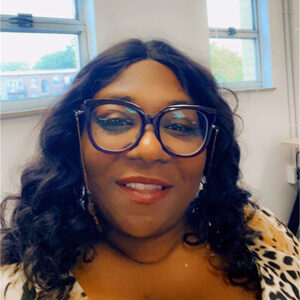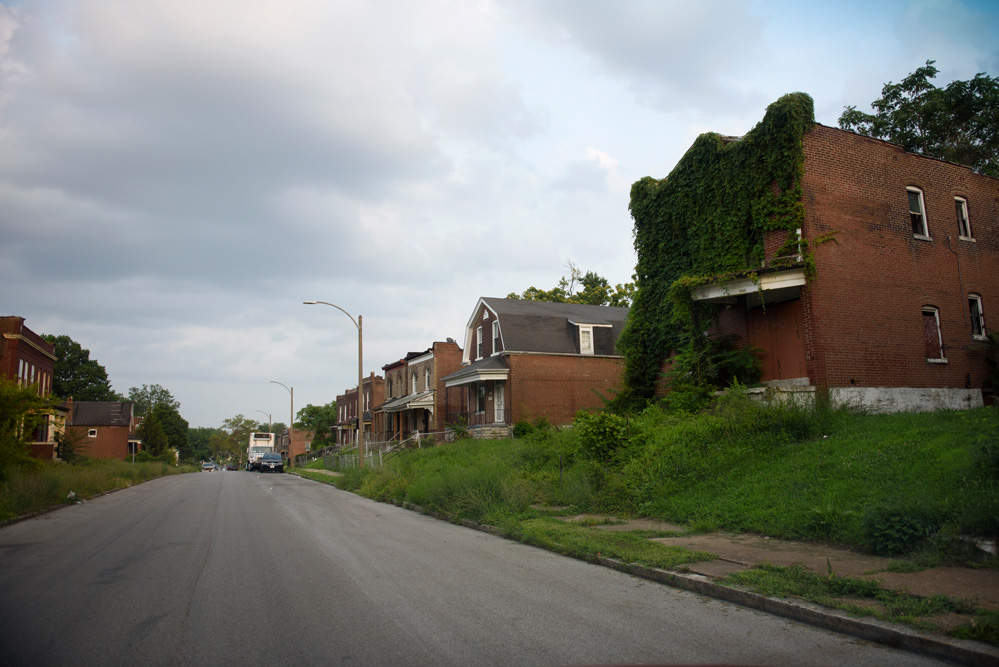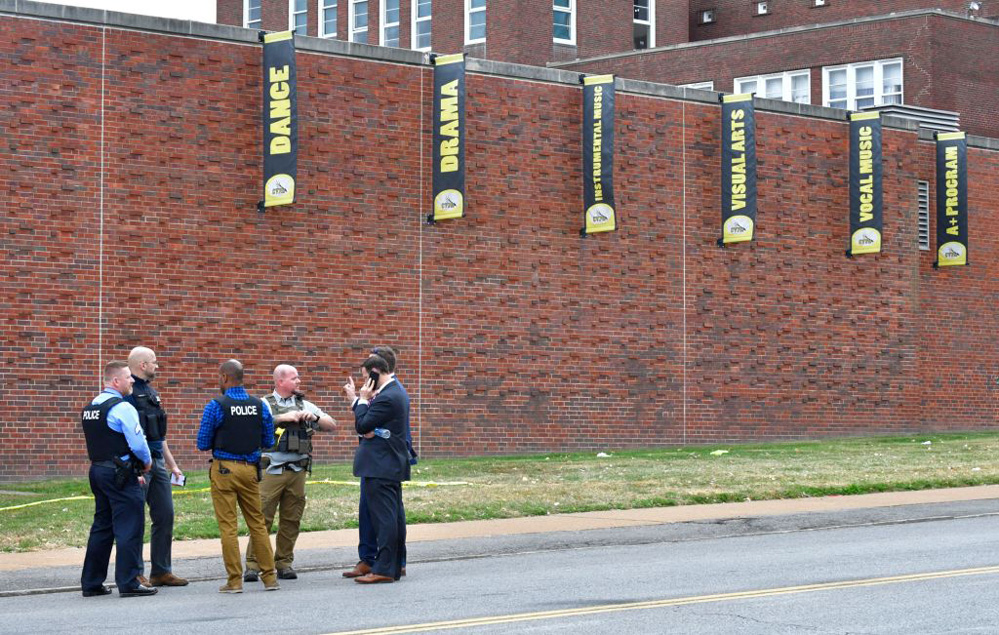St. Louis Schools Face One of the Steepest Post-Pandemic Climbs Anywhere
One of the nation’s most troubled districts even before COVID, the Gateway City looks to brand-new leadership to overcome decades of academic failure.
By Kevin Mahnken | August 8, 2023When she enrolled her fourth grader at a St. Louis public school last fall, Krystal Barnett knew she was doing something that has become increasingly rare.
Abandoned by and dogged by a for poor performance, the local school system shrank over the past few decades to a fraction of its former size. If they choose to stay in the area, a sizable number of parents now either opt for a charter alternative or shell out for private tuition.
But Barnett, a mother of two, was dissatisfied with the pandemic-era instruction her daughter had received at a nearby private school and wanted to make a change. It was the exact kind of move she often recommends to other families as the CEO of , an activist group she founded in 2019 to lobby for better educational services throughout the city and empower parents to advocate for their kids.

Soon, however, Barnett was alarmed to see her daughter floundering even before she’d gotten a chance to settle in. She’d never experienced significant disciplinary problems before, but within days, she was involved in a fight and placed on a behavior plan. Barnett attributed the struggles to the “vast difference” between her daughter’s prior experience of school and the new environment she was adapting to.
“It was our first week in St. Louis Public Schools,” she said.
The institutional troubles facing St. Louis students are typical of those that have marked much of the city’s last half-century. As in other regional metropolises that faltered in the middle of the last century — from Detroit to Cleveland, Milwaukee to Memphis — disorder rose, the middle class fled and public services like K–12 education unraveled spectacularly.
The situation now appears especially dire to many onlookers. A national study this spring , showing that the pandemic saddled St. Louis elementary and middle schoolers with some of the worst learning damage suffered by any students in the United States. The district is also navigating a generational shift in leadership, with Superintendent Kelvin Adams retiring last December after 14 years of service; his successor, former Seattle Public Schools administrator Keisha Scarlett, only took office in July.
Collin Hitt, the executive director of the Policy Research in Missouri Education (PRIME) Center at Saint Louis University, said that the task ahead is to not only turn around learning outcomes in the short term, but also set a sensible course for the transformation of the district into a smaller, more successful entity for the foreseeable future.
“You’ve got some kids two or three grade levels behind where we would have expected them to be if not for everything that’s happened over the past four years,” Hitt said. “Recovering from that has got to be the focus of the education policy conversation for the next decade.”
‘Upheaval, turnover, chaos’
Missouri is not a high-flier nationally, ranking for the most part around the middle of the pack in test scores and graduation rates. But it would be impossible to overlook St. Louis and its vicinity as the most educationally woeful community within its borders. A 2019 inventory of the weakest schools in the state — those performing among the bottom 5 percent of all that receive Title I funds, which are themselves only granted to schools enrolling high percentages of students from low-income families — , with over one-quarter in the city itself.
Decades of failure, segregation and financial dysfunction finally led the Missouri State Board of Education to in 2007, turning its governance over to a three-member administrative board appointed by both state and local leaders. After a dizzying sequence of seven superintendents in the space of five years, Adams’s lengthy tenure , though he held far less authority than chiefs in other districts.
“The past 12 years, we’ve seen stability, but we’ve also seen further deterioration of the district.”
Kelly Garrett, executive director, KIPP St. Louis
In 2011, Kelly Garrett became the executive director at KIPP St. Louis, a charter network that has grown to six schools in the last decade. Garrett credited the former superintendent with steadying the ship given the “insane amount of managerial upheaval, turnover, chaos” that preceded him. But after previously working to seed charters in districts like Houston, Memphis, and Boston, he said the change on display closer to home fell short of the transformational.
“The goal was stability, which was not a bad goal at the time,” Garrett said. “The past 12 years, we’ve seen stability, but we’ve also seen further deterioration of the district.”
The administrative panel to restore control to a locally elected board, even as serious concerns remained. In that year’s administration of the Missouri Assessment Program (MAP) standardized tests, the district’s schools were awarded just 78 percent of all possible points — much lower than Missouri’s state average of 90 percent, or even the 88 percent earned by similarly troubled Kansas City.
After the ravages of the pandemic, those numbers . The state average in 2022 fell from 90 percent to just 65 percent, while St. Louis Public Schools earned a staggeringly low 31 percent. , no more than 56 percent in any grade scored at or above the level of Basic ( as demonstrating “a partial or uneven command of” the test’s necessary skills and processes) in English; two-thirds or more students in all grades scored below that level in math.
Recent research suggests that while Missouri students absorbed a sizable blow from COVID, the once-in-a-century emergency left a particularly distinct mark on St. Louis. In May, conducted by Harvard economist Thomas Kane and Stanford sociologist Sean Reardon found that the city — along with a handful of others, including New Haven, Connecticut, and Richmond, Virginia — in academic performance anywhere in the United States.
While Kansas City is home to approximately the same percentage of students from low-income families, its average drops in learning were not as severe: the equivalent of -0.52 grade level in reading and -0.95 grade level in math from 2019 and 2022, compared with St. Louis’s slide of -0.81 grade level in reading and -1.64 grade levels in math. The split between the two districts is all the more notable given that, according to Kane and Reardon’s data, Kansas City students spent considerably more time in virtual instruction than their St. Louis counterparts.
In Kane’s view, learning loss of that magnitude is likely irrevocable without drastic changes to instruction. He believes the same old quality of teaching, delivered in the same quantity as before the pandemic, couldn’t possibly make up the difference.
“If I’ve lost a year and a half of school, or more, it is just impossible to imagine making up for that lost ground without additional instructional time,” Kane argued. “Otherwise, it’s imagining that teachers are teaching 150 percent of what they would normally teach within the school calendar, and that’s unreasonable to hope for.”
For parents like Jen Wadley, it can seem optimistic to even expect more than a year of stability from local schools.
As COVID shuttered schools throughout the city in early 2020, she learned that Carondelet Leadership Academy, the K–8 charter school attended by all three of her children, due to persistently poor academic results. Similar news came the following January, when Cleveland Naval JROTC — a her oldest son, Troy, attended as a freshman — was similarly targeted for after a year substantially spent in remote learning.
“If I’ve lost a year and a half of school, or more, it is just impossible to imagine making up for that lost ground without additional instructional time.”
Thomas Kane, Harvard University
In a process she called “chaotic,” Troy moved on as a sophomore to a public magnet program, Central Visual and Performing Arts, for his third school in three years. “The options were very limited for high schools in the city,” Wadley said. “Finding a school in St. Louis City — an adequate school — is a job within itself.”
Representatives from St. Louis Public Schools did not respond to requests for comment.
A shrinking district
Major urban districts like St. Louis were once hulking entities dotted throughout the Midwest, each serving six-figure student bodies. So plentiful and diverse were the schools that locals still frequently resort to the introductory “”: Where did you go to high school?
But total enrollment in the district , almost unbelievably, from a peak of about 115,000 in 1967 to under 17,000 in 2022 — a reduction of more than 85 percent. This is a proportionately greater decline than the broader city’s contraction from over 850,000 residents in 1950 to roughly 285,000 today.
The gradual dissipation of huge swaths of school-age children is a factor of multiple trends. Births throughout much of the metropolitan area , resulting in fewer and smaller young families within the district. According to produced by the PRiME Center, the elementary-aged population of St. Louis fell from 17,300 to just 15,300 between 2010 and 2019. Over 60 percent of the city’s neighborhoods lost children between the ages of 5 and 9, with an average decline of about one-third, and no area saw a greater drop than traditionally African American North St. Louis.
Barnett of Bridge 2 Hope — who was raised in north St. Louis but attended school in the suburbs through — reported that large areas of the city have been transformed by the departure of families to nearby suburbs like Eureka and Ladue, each located across the county line. While speculating that many students would prefer to attend schools in their own slice of the city, she said that it was difficult to contest the perception that “schools there are better.”

“My whole neighborhood looks different,” Barnett said. “All those people are in west County, north County, south County now. I don’t know if the experience is better, but the education is better. The chance to give your child a great education is a great chance.”
The end result is , with a few enrolling just 100 students or so. Former Superintendent Adams shuttered . The district intended to attract developers to its acres of surplus properties.
But in a shrinking city like St. Louis, closures also devastate families and alumni, which look to schools as anchors of their communities. When officials considered closing Sumner High School in the historically African American neighborhood of The Ville, at the prospect of losing an institution that once schooled luminaries like Chuck Berry, Tina Turner and Dick Gregory. after an eleventh-hour organizing drive, but the necessities driving it have only grown greater since.
John Wright Sr., a Sumner alumnus, later enjoyed a career as one of the region’s most distinguished educators. After serving as a teacher, administrator and superintendent at the suburban Normandy and Kinloch districts, he led St. Louis Public Schools as an interim chief in 2008. In retirement, he has also advised both mayors and Missouri governors on K–12 education, and served another brief term on the St. Louis Board of Education last year.
Wright’s perspective dates back to the 1940s, when he attended three different local schools before the fifth grade due to overcrowding. At that time, he recollected, a typical classroom might hold 40–50 students and even elementary schools sometimes consisted of multiple buildings. Now, many have fallen into dilapidation and disuse.
“It’s a matter of how you use that smaller size to bring about change. What’s left of the population has stabilized, so how do you improve matters now that you’ve got a size that you can put your arms around?”
John Wright Sr., former interim chief, St. Louis Public Schools
While a disappointment to some, Wright said, the diminished scale of St. Louis Public Schools could become an asset to Keisha Scarlett, the incoming superintendent. Rather than presiding over mass building campaigns, he argued, she could mostly focus on consolidating assets and improving outcomes for the students who remain.
“It’s a matter of how you use that smaller size to bring about change,” Wright said. “What’s left of the population has stabilized, so how do you improve matters now that you’ve got a size that you can put your arms around?”
‘Poised for rebirth’?
Scarlett’s arrival this summer has been seized upon by some parents and educators as a cause for hope.
Amidst a around the district, the 24-year veteran of Seattle Public Schools is already leading around 21 schools. She that the city is “poised for a rebirth” in the years to come. Whatever her long-term vision, however, even the prospect of fully staffing classrooms this September is looking hazy. District representatives that 15 percent of its teaching positions, amounting to nearly 280 jobs, were as yet unfilled.
“They’re thrown so many curveballs — their dream school closed, there’s a school shooting, there are no buses — and they just get to the point where they don’t care.”
Jen Wadley, parent
Another lingering question is how Scarlett will choose to deploy two sources of newly available money. According to Georgetown University’s Edunomics Lab, St. Louis Public Schools in federal COVID relief funds since 2020, only 13.7 percent of which has yet been spent. (Federal law stipulates that 30 percent of such aid must be spent directly on learning recovery; the offers little in the way of specifics.) In a hopeful sign of public faith, voters a $160 million bond issue last year to fund building repairs and upgrades.
City leaders, meanwhile, have devoted the last two years drafting to address the most pressing issues confronting both traditional and charter schools. But while some observers applaud the efforts at strategic thinking in a system that has too often veered from one emergency to the next, the 128-page document for on how to stem the migration of families to suburbs or offload unneeded building inventory. Some of its recommendations essentially advise still more planning.
A further worry, highlighted by Scarlett in an interview with a local news station, is the threat to students posed by violence in school facilities or elsewhere. The city has been one of America’s most crime-afflicted for decades, and scores of children in the St. Louis area with guns in 2022. KIPP’s Garrett said the local levels of gunplay seemed unique.
“I’ve personally watched — within 100 yards of me sitting in a chair or standing at a window — four different shootings in my day-to-day activities,” Garrett said. “The access to weapons and the level of violence in the community is constantly present.”

The community’s worst fears , when a former student broke into Central Visual and Performing Arts High School and shot nine people with an assault rifle. A 61-year-old teacher and a 15-year-old student were killed, along with the perpetrator after a shootout with police.
Though enrolled in his second year at the school, Jen Wadley’s son Troy wasn’t present on the day of the attack. Still, the tragedy threw up yet another obstacle in the way of his education. Having already sat through months of virtual instruction in the eighth and ninth grades and switching to a new high school as a sophomore, he didn’t return to in-person classes after the shooting.
Even outside of school, driver shortages have forced St. Louis Public Schools to bus routes, including to credit-recovery programs over the summer. Heading into what should be his senior year, Wadley said, her oldest son has spent almost as much time outside of high school as in, and the status of his graduation credits is still unclear. She worries that he views his time at school with more apathy than interest.
“It’s hard enough to get a kid to participate in high school,” Wadley said. “But then they’re thrown so many curveballs — their dream school closed, there’s a school shooting, there are no buses — and they just get to the point where they don’t care.”
Help fund stories like this.
